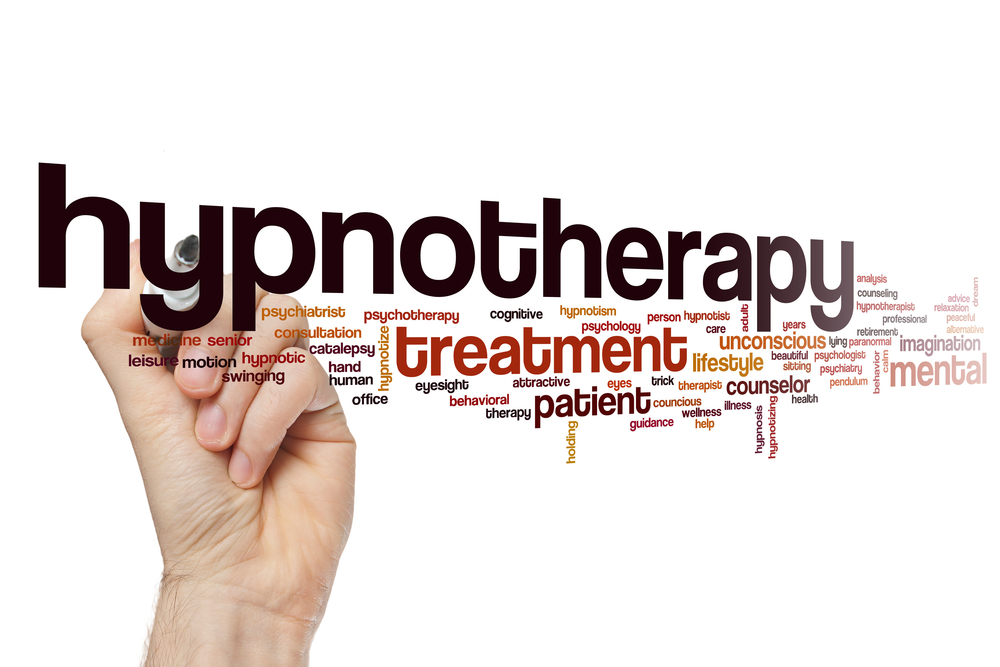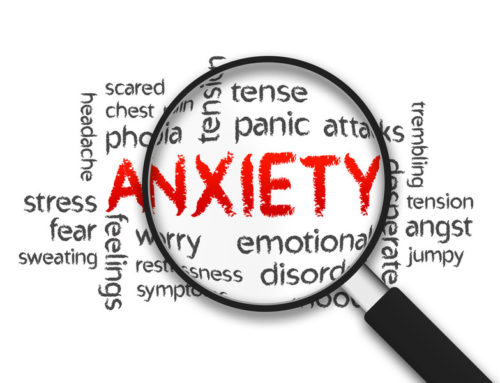Cognitive Behavioral Hypnotherapy in the Treatment of Anxiety
By Charles Beeson, CHt.
Hypnosis has become an increasingly popular treatment for alleviating anxiety disorder symptoms. Although, the technique may appear controversial and suspicious to many people, hypnotherapy, when provided by an experienced practitioner, is believed by many experts to produce better results compared to non-hypnotic treatments.
How Cognitive Behavioral Hypnotherapy Treats Anxiety?
Significant relief with severe anxiety disorders can be achieved when treated with Cognitive Behavioral Hypnotherapy by the folowing;
- Instruction in Self-Hypnosis techniques that sustain a more relaxed nervous system.
- Desensitize stressful memories.
- Faster learning of self-help techniques to manage anxiety symptoms.
- Help change the threat perception of the thought, feeling or situation that is triggering the sympathetic nervous system’s “fear response”.
- Help improve self-confidence.
According to Hersen and Sturmey (2012), hypnosis improves the outcome of the treatment in light of cognitive behavioral therapy during the treatment period, as well as, the six-month follow-up period. It is important to note that Cognitive Behavioral Hypnotherapy (CBH) has three major phases; pre-suggestion phase (induction of hypnotic state), suggestion/therapy phase, and the reinforcement/practice phase. A hypnotherapist helps a patient suffering from anxiety to relax during the pre-suggestion phase.
This phase enables access to the unconscious mind through relaxation of the conscious mind (Robertson, 2013). Pre-suggestion is followed by the suggestion therapy phase, which is carried out by a certified hypnotherapist that is trained and experienced with different severities of anxiety.
The Suggestion phase is carried out when a patient is in a relaxed mode (hypnotized). The introduction of new thoughts replaces the old ones, which might have led the patient to develop an anxious emotional state. In the third phase, the patient is encouraged to practice the “suggestions” they acquired during the hypnotherapy sessions.
Hypnotherapy Treatment Follow-Up
It is of the essence to note that the third phase is done regularly until the patient overcomes anxiety. This is accomplished by pro-actively using the anxiety relief techniques presented in the suggestion phase and listening to reinforcement recordings that replicate both the pre-suggestion/relaxation and suggestion therapy stages used during their last session.
According to Hersen and Sturmey (2012), Cognitive Behavioral Hypnotherapy is usually practical; hence, the patient is not required to visit a therapist regularly. However, multi-step processes have been developed that can often achieve excellent, long term results, in as few as 3 to 6 sessions.
In addition, an individual suffering from anxiety and its effects can get online help from certain resources, such as, www.anxietybegone.com. This web site provides CBH recorded sessions that a patient can download to their computer or cell phone. As a result, Cognitive Behavioral Hypnotherapy is accessible to patients dealing with anxiety disorders at a very “inexpensive cost”, without a therapist.
These online services can also be used adjunctively to compliment any psychological or medical treatment being received.
As indicated above, the patient learns in this manner, how to achieve, maintain relaxation and end their adverse anxiety symptoms. Using the availed self-help techniques, such as the ones provided through written instruction and video tutorials on “www.AnxietyBeGone.com”, the patient can learn how to manage their anxiety, end panic attacks and use self-hypnosis techniques to relax and further reinforce their self-management techniques.
As with disorders, such as Generalized Anxiety, the symptoms can eventually wane off (Hersen & Sturmey, 2012). Since recurrence of symptoms is possible, the learned self-management techniques, combined with improved confidence in their use, such recurrence can be avoided.
Overwhelming Evidence
The efficacy of Cognitive Behavioral Hypnotherapy in helping people with anxiety disorders is overwhelming. It is important to note that a Meta-Analysis study carried out by Kirsch, Montgomery, and Sapirstein (1995), showed that when Cognitive Behavioral Therapy, as typically used by most licensed mental health providers, that when supplemented with hypnosis or hypnotic instructions, were 70% more effective than the non hypnotic treatments.
The study compared 18 Cognitive Behavioral Hypnotherapy studies and found that the method being more effective in helping people with anxiety disorders. The study also showed positive results even after the treatment. It is crucial to indicate that a similar study indicated analogous results.
Bryant and colleagues (2005) conducted an akin study; whereby, they recorded strong evidence that CBH is useful and efficient in helping people suffering from anxiety to relax for the short term and overcome anxiety on the long haul. Bryant and others (2005) showed that civilian anxiety disorder patients who were suffering from Acute Stress Disorder (ASD) benefitted more from hypnotic cognitive based treatment compared to their non hypnotic colleagues.
The two studies showed that CBH is better and more effective for treating anxiety.
A study by Golden (2012) showed that hypnosis is a critical part of treating anxiety. An individual is required to revisit principles and techniques used in cognitive behavioral treatment to understand Golden’s findings. Cognition is believed to be the crucial element. Patients can only understand where a problem lies after being cognizant of their thought patterns. Golden (2012) indicates that practitioners help the patients to understand their thinking patterns when identifying their source of anxiety.
Research by Golden (2012), indicated that the application of CBH to treat anxiety can be achieved through numerous ways. However, it is of the essence to note that the level or kind of hypnosis used can be retained at different levels. For instance, some practitioners can use practitioner-suggested hypnosis; whereby, the patient’s behavior is induced through hypnosis by the practitioner suggesting positive actions and thoughts while the patient is hypnotized. The patient can suggest thoughts and activities for the treatment.
Popular Misconceptions of Hypnosis
Kirsch, Montgomery, and Sapirstein (1995), showed that the use of hypnotherapy has been proven to produce more reliable and effective results for treating anxiety patients, unlike other techniques. As Mathur and Khan (2011) argue, individuals who doubt the reliability of Cognitive Behavioral Hypnotherapy tend to regard hypnosis as pseudo-science.
Hypnosis is very common in pop culture and science fiction films; thus, they might have obtained their meaning from such sources. However, hypnosis, in its strictest meaning, refers to a situation where individuals are unable to control their will completely and are prone to the suggestiveness of other people (Harvey, Bryant, & Tarrier, 2003). This notion is fictional.
Conclusion
In summary, patients will not lose their willpower, which is crucial. In other words, it means that the patients will be placed in a situation of giving their chance into the suggestions of others, which in this case may refer to the hypnotherapist. By achieving this, the practitioner, or therapist, is able to induce positive thoughts and actions to the person or long distance by phone or internet video chat.Cognitive Behavioral Hypnotherapy is effective in treating many types of disorders, including:
* Generalized Anxiety
* Panic Disorder
* Social Anxiety
* PTSD
* Depression
* Agoraphobia
* Fears of Public Speaking. Driving and Flying
The British Medical Association endorsed the use of hypnotherapy in 1955 for anxiety, depression, stress and Irritable Bowel Syndrome (IBS). It is increasingly being used throughout the United States, Canada and Australia.
References
Bryant, R., Moulds, M., Guthrie, R., & Nixon, D. (2005). The Additive Benefit of Hypnosis and Cognitive–Behavioral Therapy in Treating Acute Stress Disorder. Journal of Consulting and Clinical Psychology, 73(2): 334–340.
Golden, L. (2012). Cognitive Hypnotherapy for Anxiety. American Journal of Clinical Hypnosis, 54(4): 263-274.
Harvey, G., Bryant, A., & Tarrier, M. (2003). Cognitive behaviour therapy for posttraumatic stress disorder. Clinical Psychology Review, 23: 501–522.
Hersen, M., & Sturmey, P. (2012). Handbook of Evidence-Based Practice in Clinical Psychology, Adult Disorders. Hoboken, NY: John Wiley & Sons.
Kirsch, I., Montgomery, G., & Sapirstein, G. (1995). Hypnosis as an Adjunct to Cognitive-Behavioral Psychotherapy: A Meta-Analysis. Journal of Consulting and Clinical Psychology , 63(2): 214-220.
Mathur, S., & Khan, W. (2011). Impact of Hypnotherapy on Examination Anxiety and Scholastic Performance among School Children. Delhi Psychiatry Journal, 14(2): 337-343.
Robertson, D. J. (2013). The practice of cognitive-behavioural hypnotherapy. London, UK: Karnac Books





